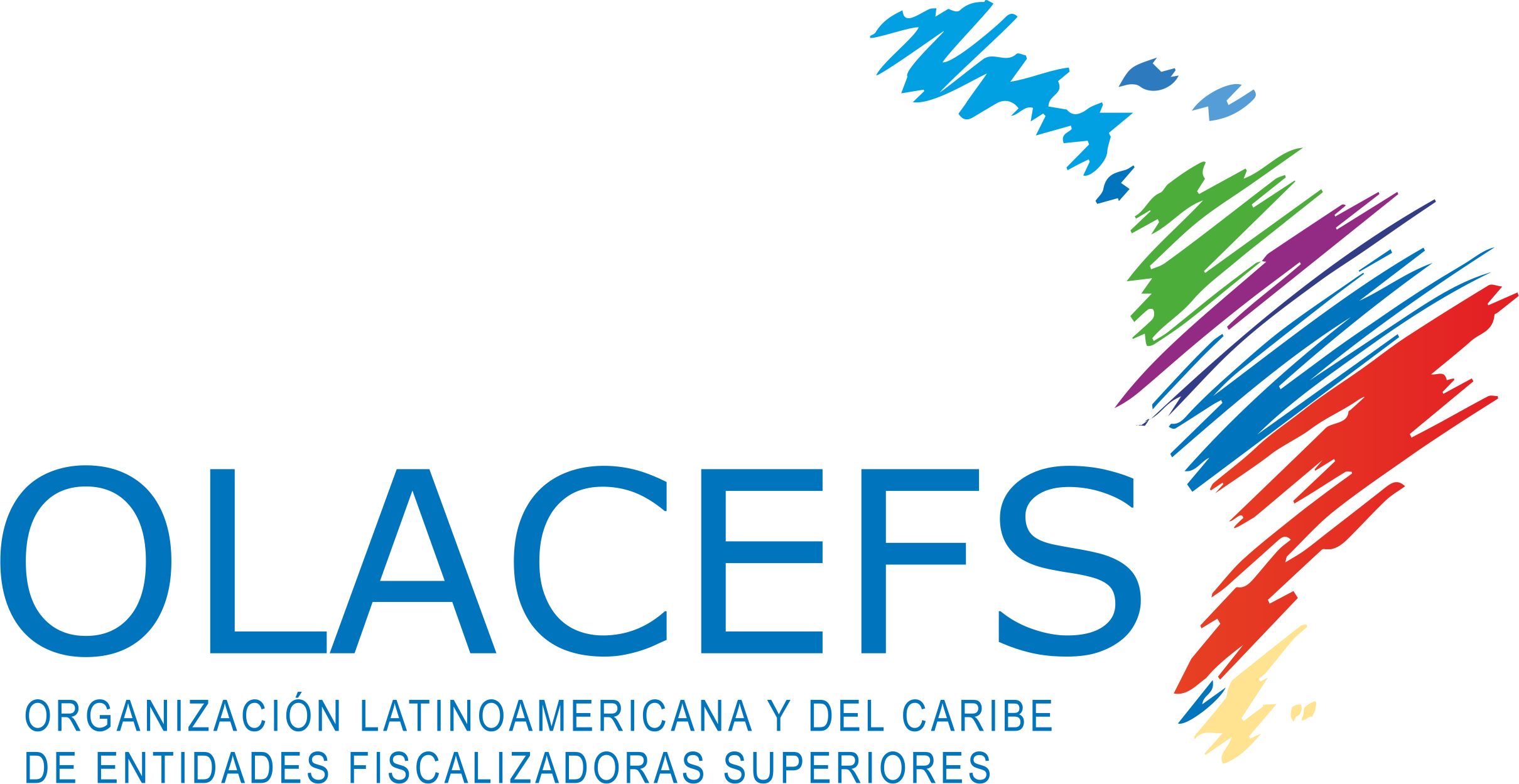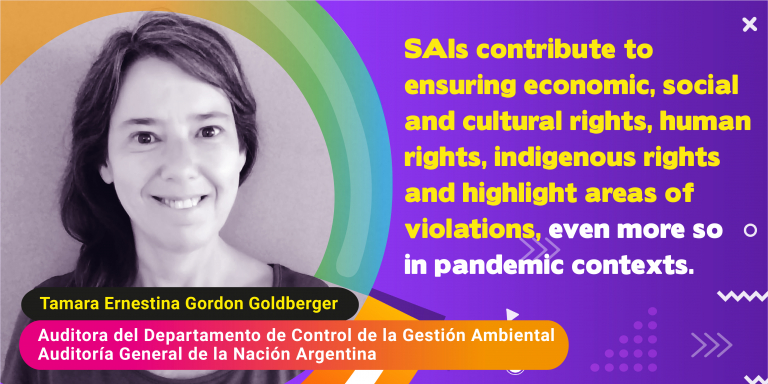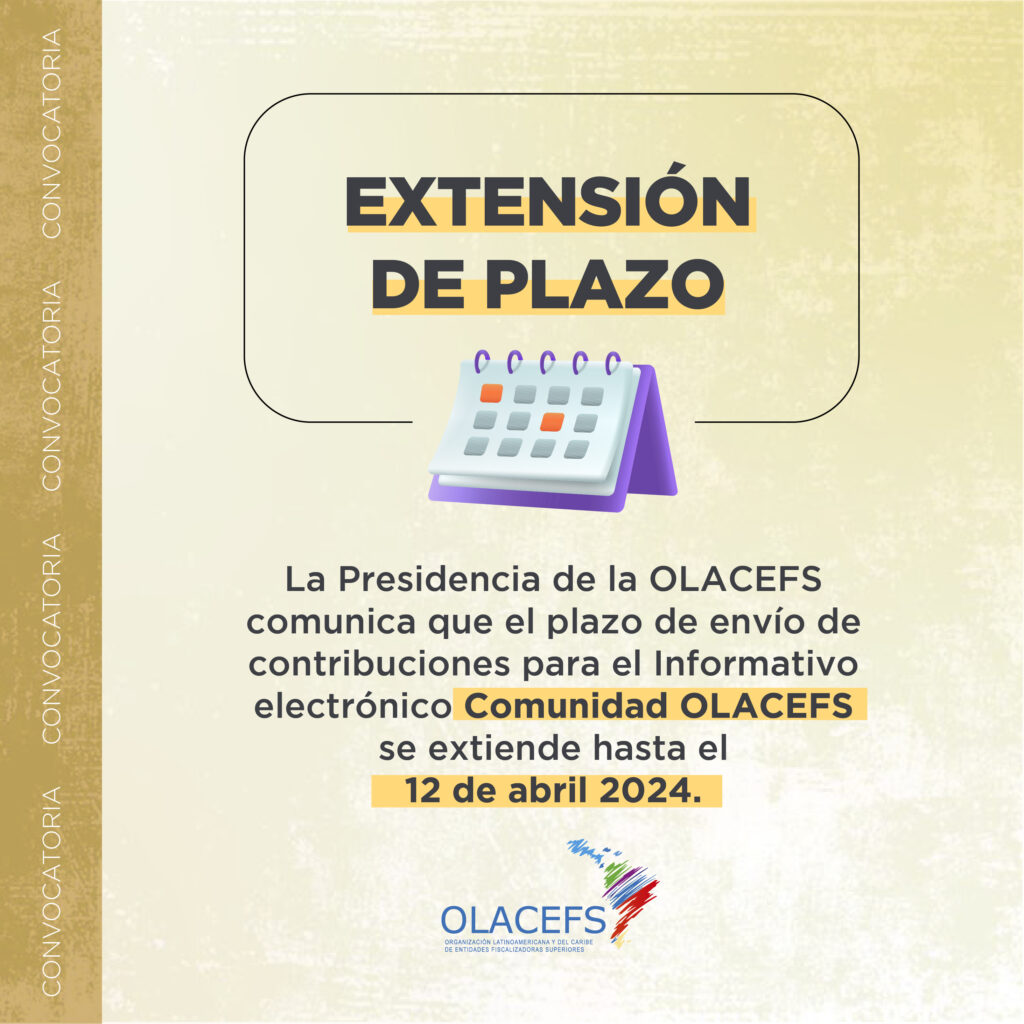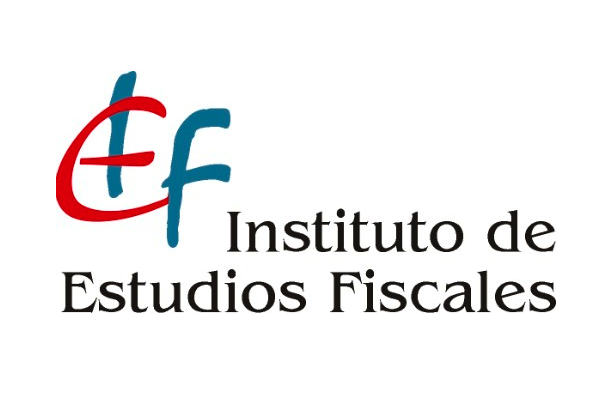Tamara Ernestina Gordon Goldberger
Auditor of the Department of Environmental Management Control
General Audit Office of the Nation of Argentina
Celebrating the initiative of this OLACEFS blog, along with greetings, I want to send you a brief reflection related to the Sustainable Development Goals (SDGs) and groups in vulnerable situations. This year we have been singularly challenged by the question of who are the humans of the rights? This writing intends to address limitations that exist at the global level for the achievement of the SDGs, mention problems that impact the goals and indicators and make available information regarding the situation of the indigenous peoples of Argentina in the context of a pandemic.
PUBLIC POLICIES AND SDGs
The conversation around whether the SDGs will succeed in meeting their fundamental principle of “leaving no one behind” has had new interventions since the beginning of the current pandemic. The Supreme Audit Institutions (SAIs) from the OLACEFS made contributions through a new application, www.ods.olacefs.com. At a global level, from various work spaces, they tried to illuminate the problems linked to “vulnerable groups.” Both the Economic Commission for Latin America and the Caribbean –ECLAC– and the United Nations were quick to point out that Covid-19 is an environmental and human rights crisis. From a local perspective, and from another perspective, national universities and research institutes that work with indigenous peoples warned of long-standing problems that deepened the quarantine due to the pandemic in a report that describes the socio-economic and cultural effects of the pandemic and the obligatory social isolation (more information at http://antropologia.institutos.filo.uba.ar/sites/antropologia.institutos.filo.uba.ar/files/info_covid_2daEtapa.pdf and https://gemasmemoria.com/2020/06/03/segundo-informe-red-gemas/).
On the other hand, civil organizations in Argentina have delved into the possible failure to achieve the SDG targets being due to breaches related to economic, social and cultural rights (ESCR) and international human rights law. In turn, the 2020 SDG Report of Argentina, on page 233, reports that “mutual reinforcement between the SDGs and human rights continues to be a challenge to be reflected in planning, implementation, follow-up and accountability.” Given that the evaluation and control of public policies includes those whose execution collaborates with the targets and goals of the SDGs, which includes the fulfillment of these types of rights, SAIs assume a commitment regarding “vulnerable” groups. This is so inasmuch as ESC rights constitute an unavoidable tool that the State must use in the definition of public policies. Consequently, both the SDG targets and the strategies for their achievement should be implicitly crossed by these international obligations. This requires the control bodies to pay greater attention, in accordance with the international obligations that each State assumed in terms of ESCR protection, among others.
From the learnings in SDG approaches linked to Indigenous Peoples, it appears that the integrated and indivisible nature of the 2030 Agenda calls into question a reductionism or fractional approach to the goals, indicators and targets, especially for public policies with complex approaches.
OBSTACLES TO THE ACHIEVEMENT OF THE SDGs:
Without being exhaustive, we can mention the following drawbacks.
A- Government Changes: they seem to influence the appropriation of the SDGs (adaptations with respect to what has been internationally agreed upon), in the definition of indicators and in the alignments with public policies.
B- Reliable measurement mechanisms: some problems regarding valid measurement mechanisms continue to be worked on. Others have already been exposed and were the subject of discussions at the national and international levels. An example is the case of considering global or national definitions of terms such as “cities,” “urban areas” and “rural” spaces, in support of the global monitoring of the SDGs. Similar problems of definitions, characterization and homologation seem to appear with dimensions related to “poverty.” There are public policies whose definitions do not usually consider extreme poverty, or do not discriminate what dimension of poverty they address, which would make it difficult for them to contribute to certain SDGs by considering a holistic perspective of them. The homologations between organizations, between public policies and SDGs, and in measurements that are carried out at the regional or global level, must ensure that they have equivalent definitions, if necessary. The same issues affect coordinated audits, which usually agree on the content they assign to their definitions.
C- Data disaggregation: various involved and vulnerable population groups are made invisible in the SDG indicators. They should not be considered only in the indicators of the targets that specifically address the problems of each group. The lack of generation of robust and secure data sources that function as baselines in articulated public policies continues to be a problem for many countries. The most vulnerable remain even more excluded and lagging behind. The analysis of the inclusion of the perspective of rights and disaggregation of data in public policy interventions is a matter of accountability during the control work of SAIs.
PARTICIPATION AND ROLE OF SAIs
The work that won the first prize in the Regional Competition on Good Governance, 2017 edition (www.olacefs.com/wp-content/uploads/2017/11/Primer-premio-Argentina.pdf) which was organized by the Technical Commission on Good Governance Practices (CTPBG), chaired by the President of the AGN, Mr. Jesús Rodríguez. There he linked the SDGs, indigenous peoples and public policies, questioning the adequacy of the incorporation of natives in the SDGs. In addition, there were mentions related to the lack of access to participation. The absence of participation in decisions constitutes an item mentioned by these populations in the context of a pandemic, as well as the lack of territorial and sociocultural adaptation of the measures adopted, in relation to the lives of indigenous people.
Regarding public policies at the national level, it often the case that they do not always ensure citizen participation within their rules of creation and/or operation, appointing a person responsible for that purpose. On the other hand, with regard to the SDGs, the responsibility for social participation is sometimes transferred to local governments. Understanding that the purpose is to give more autonomy to local governments in federal countries, the reality is that national governments are forced in certain cases to provide support to the extent that the autonomy conferred by federalization has not been economically robust. In this consideration that there are funds that are provided by the national level, and even in the context of a pandemic, the accountability and control that the SAIs carry out should subject to examination the measures adopted by the nation to demand accountability from the provinces and municipalities linked to the quality of participation, with minimum standards for their implementation. SAI workers can contribute there in:
- reviewing that the rules for creating a public policy specify those responsible for ensuring participation for the entire cycle (planning, implementation, follow-up, evaluation);
- If the responsibility falls on the local government, verify that the Nation has some control mechanism in place to corroborate that this participation was fulfilled in a timely and adequate manner. This also implies transparency, governance, and accountability in times of pandemic, every time public funds are granted by the Nation;
- Verify that new participatory mechanisms and appropriate technologies have been implemented for times of pandemic. Public information access portals also do not usually have translations in indigenous languages. Fortunately, the United Nations is collaborating on these aspects; and
- That participation is guaranteed during the pandemic and that groups in vulnerable situations are specifically considered and called upon , whenever appropriate and with adequate mechanisms that allow them to participate (accessible buildings and adequate technical support for people with disabilities; translators for native peoples, internet access).
CONCLUSION:
SAIs make an important contribution by ensuring economic, social and cultural rights, human rights, indigenous rights and illuminating spaces of violations, even more in pandemic contexts. Learning from audits linked to SDGs and their alignment with public policies is constant. The evaluation of this alignment provides information as valuable as the evaluation of the quality of indicators created at the national level and the modifications that governments make in their adaptations with respect to what is internationally agreed upon. Meanwhile, the different competitions organized by the OLACEFS, through its Commissions, such as the CTPBG, always allow for the sharing of experiences, challenges and findings. The current webinars on Post-Pandemic Governance, run by the CTPBG, also provide contributions on inequality, vulnerabilities and rights (https://www.youtube.com/watch?v=J-_1U_AmD5g). Although we still have much to learn and improve upon, it is clear that we have consolidated institutional robustness regarding the SDGs. I am proud to be part of an institution concerned about historically violated groups and groups in vulnerable situations, who are also humans of the rights: women, children, indigenous peoples, Afro-descendants, migrants and refugees, people with disabilities, the elderly, among others. The definition of critical links and nodes constitute actions in favor of compliance with the SDGs.
About the Author:
Tamara Ernestina Gordon Goldberger has a degree in Anthropological Sciences from Universidad de Buenos Aires. Her undergraduate thesis analyzed the relationship between “people with disabilities” and the university space, obtaining the maximum grade. Advanced Degree in Environmental Conflicts and Participatory Planning (FLACSO). She is currently preparing her master’s thesis in Public Policy and Development (FLACSO) where she analyzes public policies related to indigenous peoples. She has the title of SDG Promoter (International Training Course on the SDGs, organized by the Honorable Senate of the Province of Buenos Aires and the Provincial Organization for Sustainable Development). She has worked since 2007 as a field auditor in the Department of Environmental Management Control of the General Audit Office of the Nation of Argentina, Planning and Special Projects Management. She obtained the first prize in the international competition organized by the OLACEFS (CTPBG) in the 2017 edition and the third place in the 2018 edition.





